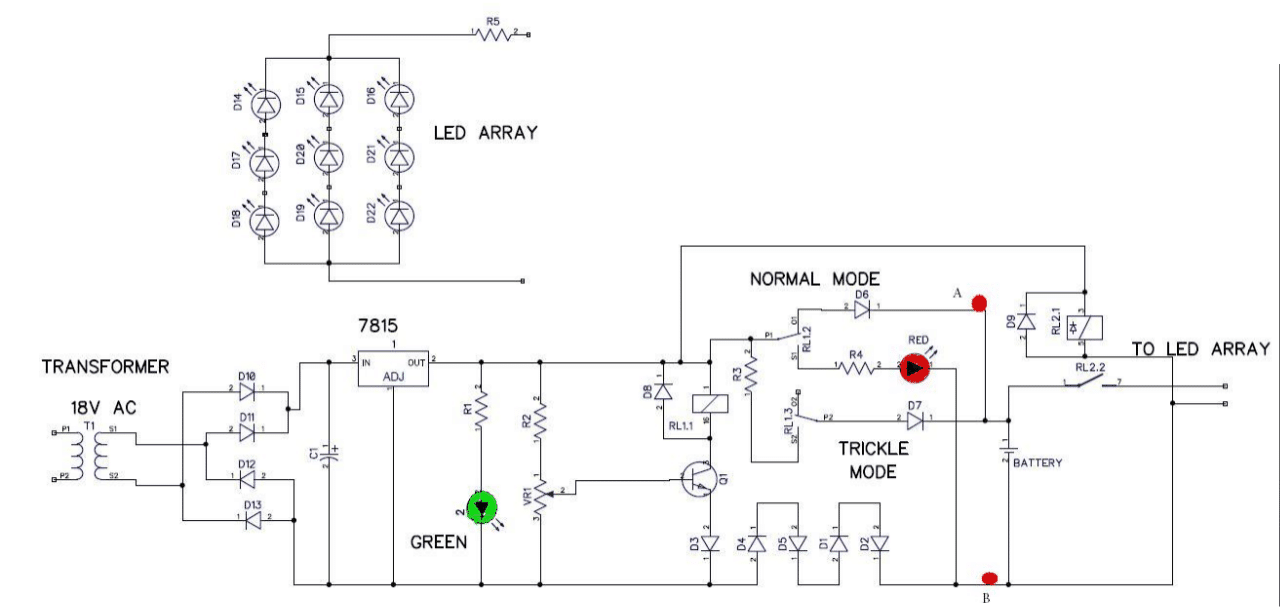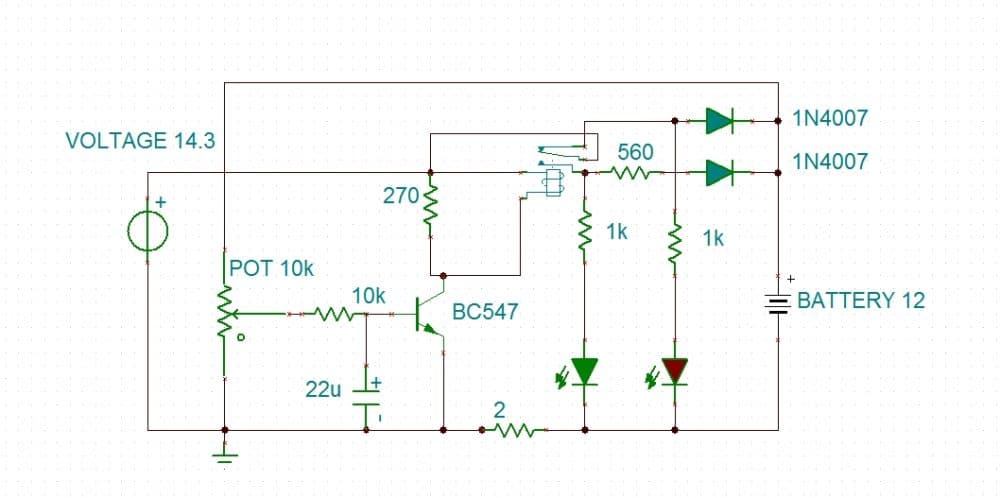The included battery charger circuit was designed and built by Mr.Vinod Chandran, however there's some issues and problems with the circuit the troubleshooting of the same is addressed in this article. I have explained the discussion between Vinod and me.
Discussing a Transistor Battery Charger Problem
Vinod: I am attaching the circuit image of the charger with hysteresis feature. (with my modification.). This charger is working good. But i need your suggestions and confirmation.


Swagatam: Using a transistor won't give accurate results, moreover the setting part would become very tedious. The circuit is technically correct, if you can adjust the tripping point correctly, then it might just work.
Vinod: I am going to test this circuit. I already build this in general board. automatic cut-off is set in 13.6v now. All i want to wait for the battery to discharge around 12v. I will inform you the result.
Vinod: I made the charger (hysteresis) but there is a problem. i will attach the image to explain the problem. When i connect multimeter in that particular red dots, the voltage shows 16.8.(0.43 A) but when i disconnect battery from the charger and measured again. then there is no problem. the out put is 14.2. And the other pin of the relay(through the current limiting resistor) will deliver a clean output voltage of 13.9 (0.033A). Why this is happening ?. The only change i have made from this circuit is to grab the green LED and R1 from there and connect it after the D6.

Swagatam: It's difficult to understand and troubleshoot the fault, if you are connecting meter prods across the battery terminals, it should show the dropped voltage level of the battery ... this problem can happen only if the source current is too high and not at the recommended 1/10th level of the battery AH, make sure to use an input that is specified with the above current limit
You can repeat the checking by switching OFF the power supply and then again switching ON the power supply keeping the meter connected to the points A and B.
Hi Swagat, At last i made a charger that suits my needs. this is the schematic.(plz look attachment). Until battery gets 13v this is a constant current charger(400-500mA). After 13v, charging current is 25mA. And the LED's indicate the charging stages. Regards Vinod chandran

Respected Sir,
I am working as a Hardware Trainee in EV. I wanted to learn circuit designing and work in my Electronics core. Please assign me some small circuits so that i can try to design them. Please don’t hesitate to reply to my questions.
Thanks and Regards
Vaishnavi AH
Hello Vaishnavi,
Please go to the following page and let me know which concept looks most suitable for you to start with.
https://www.homemade-circuits.com/circuit-projects-for-beginners-and-school-students/
Please comment under the above post, then we can start the tutorials.
How to design circuits, I am a fresher. Guide me in my career
You will have to start learning by building small circuits and how they work and how to troubleshoot them, and then gradually go for bigger designs…if you any problems understanding them you can consult me here, I will try to figure it out for you…
Hi Mr. Swagatam;
I have scrap battery charger and its output is for the 72V 8A. But I have no battery to test it. I would like test if voltage / current will collapse or not while charging. So it is possible to test it with indoor apliances like freezer bulb or similiar.
Hi Suat, yes it is possible to test the power supply output response by connecting a dummy load such as an appropriately rated incandescent bulb…
thanks for the kind support.
I am not engineer so I am not able to do but I think it maybe about 700 Watt and so it may be around
220V 3A incandescent bulb. Nevertless I am not sure about it.
Suat, The bulb current rating and volage rating must be identical to the power supply rating, only then the actual response can be analyzed
Please how can I modify this for 15amps charging amps
by using a relay with contacts rated at 20 amps
Thanks sir, I used my modified sine inverter to charge lead acid Battery but didn’t charge but charged with utility supply, why.
If you are using an inverter for charging a battrey then the inverter battery must be 5 times larger than the battery which is being charged…..only then you will find it getting charged…but this does not make much sense
Thanks sir for educating me, for knowledge reason, I want to ask why does 1kva generator set will charge the battery but 1kva inverter will not charge.
check the current with an ammeter for the two sources while charging the battery, that will explain the reason behind it.